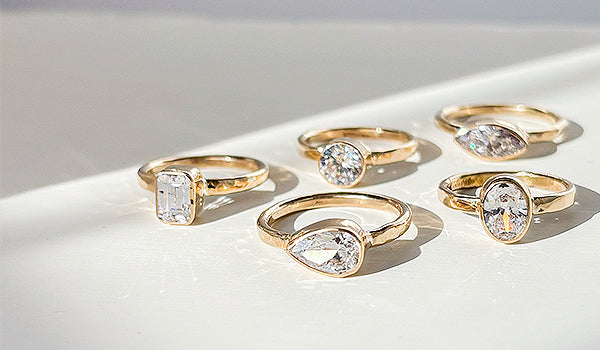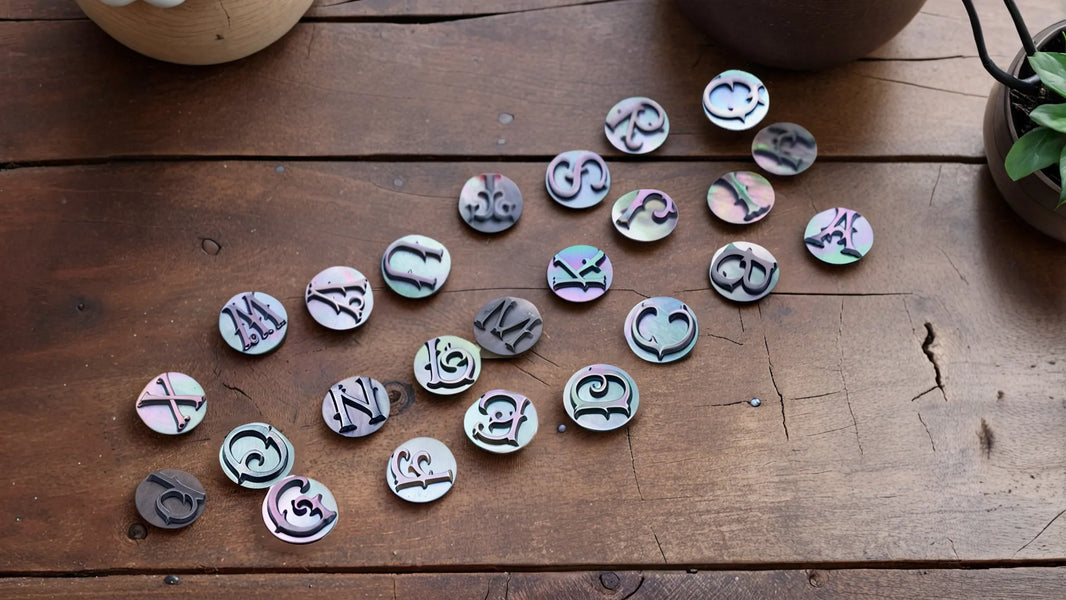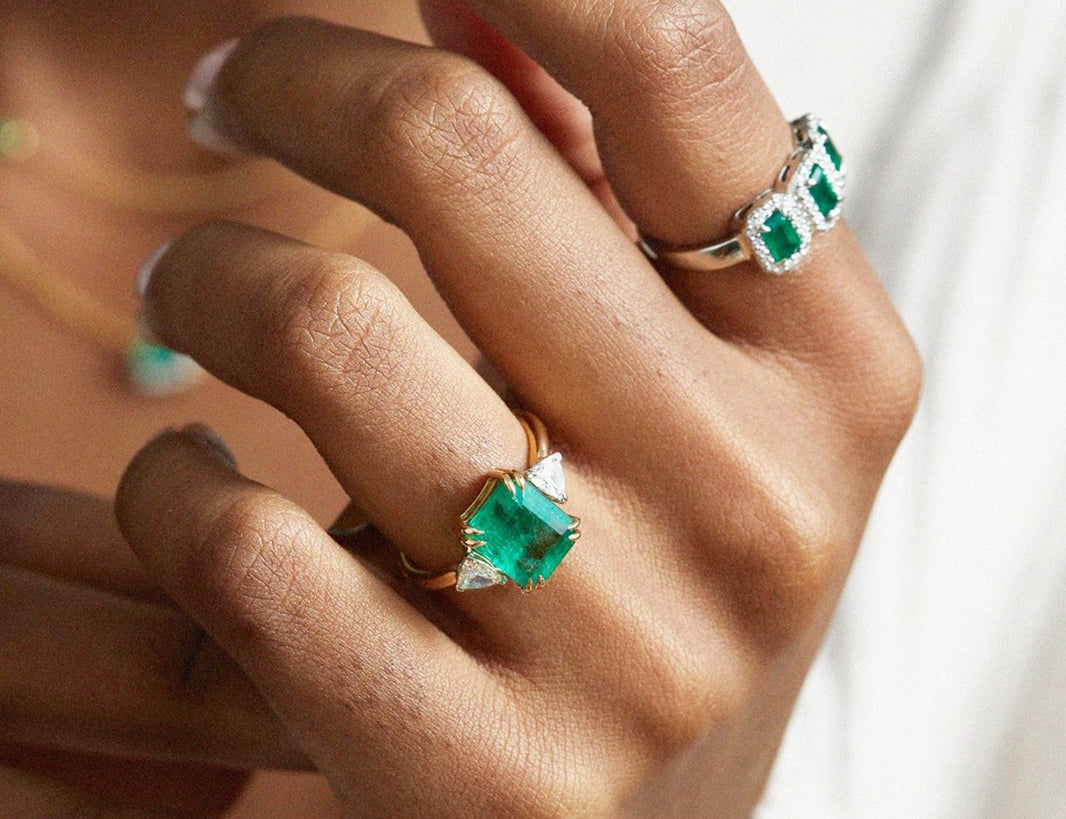A solitaire is the diamond at its most eloquent: one stone, one promise, one line of light that doesn’t need accompaniment to be unforgettable. In showrooms, I have watched clients fall quiet the moment a well-cut solitaire catches afternoon sun—no halo, no side stones, just pure geometry and fire. If you want that moment without the heavy bill, lab grown solitaire rings are the most sensible way to achieve it. The look is classic, the engineering is sound, and the price-to-beauty ratio is extraordinarily favorable when you buy with intent.
This guide distills what matters when the goal is timeless simplicity at smart prices. I will ground claims in respected sources where appropriate and add field-tested tactics from years of comparing stones under daylight and at arm’s length. Where the industry disagrees, I will explain why and suggest how to verify before you buy.
What “Lab Grown Solitaire” Really Means
A lab grown diamond is crystallized carbon with the same physical, chemical, and optical properties as mined diamond. It is created either by high pressure, high temperature (HPHT) or chemical vapor deposition (CVD). GIA confirms that both growth methods produce real diamonds; what differs is the production process and growth-related features gem labs can identify. Because lab grown diamonds eliminate mining and compress the supply chain, they are usually priced lower than mined counterparts of similar grade, a point echoed by Varniya, Brilliant Earth, and Whiteflash.
A solitaire ring, meanwhile, is a single diamond set on a plain band. Timeless prong designs descended from the Tiffany setting (introduced in 1886) maximize light and presence; bezel and cathedral variations prioritize protection and a sleek profile. As a connoisseur’s choice, the solitaire is unforgiving: there is nowhere to hide a mediocre cut. That is precisely why it rewards careful selection.

The Value Case: Why Solitaires Are the Smartest Way to Save
Two forces compound to make lab grown solitaires unusually efficient purchases. The first is the diamond itself. Academic and retail sources commonly cite lab grown savings versus mined diamonds ranging roughly from 20–40 percent, with individual examples showing larger gaps at the top of the color/clarity spectrum. The second is the setting. A simple solitaire avoids the additional diamond weight and intricate labor of halos and side stones, channeling budget into the center stone’s cut and carat.
Here is a concise view of price claims across reputable sources and why they differ.
Source |
Claimed Advantage or Example |
Likely Drivers of Variance |
Varniya (citing Statista) |
About 30–40% lower than mined |
Retailer margins, rapid price movements, and grade mix |
Academia.edu (industry overview) |
Often 20–30% lower |
Earlier timeframe and broader averages in academic literature |
Whiteflash (illustrative listings) |
Case examples show far larger gaps at high color/clarity |
Premium natural pricing for D–F, VVS grades; promotional pricing on select lab stones |
The ranges are real and the discrepancy is not a contradiction. It reflects timeframe, sample selection, region, and methodology. Trade examples that compare D–F, VVS natural vs D–F, VVS lab grown often show the biggest gaps. Broader, older literature reports smaller averages. The prudent response as a buyer is to compare like-for-like within the same store on the same day and let your eyes run the value test described later by Ken & Dana Design: if two stones look the same, default to the less expensive unless a concrete benefit justifies the premium.
The 4Cs, Re-Ordered for Solitaire Success
In a solitaire, cut is king. Ken & Dana Design emphasizes leading with look and feel after sensible research, and I agree. A superbly cut diamond appears brighter, livelier, and often larger than a heavier but poorly cut stone. After cut, prioritize color that looks white to your eye in your preferred metal and clarity that is eye-clean at conversation distance. Carat comes last, because the first three can make a stone wear bigger than the scale suggests.
Best Brilliance, Varniya, and many trade guides converge on proven sweet spots for value. In daylight evaluations I conduct, these guidelines consistently produce satisfying results.
Spec Dimension |
Practical Sweet Spot for Cheap, Elegant Solitaires |
Why It Works |
Cut |
Excellent/Ideal for rounds; strong light performance benchmarks for fancy shapes |
Maximizes fire and brightness, making the diamond read larger and cleaner |
Color |
G–J “near colorless,” tuned to metal tone |
Looks white in everyday wear while avoiding the steep D–F premiums |
Clarity |
VS2–SI1 when eye-clean; review videos without magnification |
Invisible inclusions at arm’s length deliver lower cost with no visible penalty |
Carat Strategy |
Just under “magic sizes” like 1.00 and 2.00 ct |
0.90–0.99 and 1.80–1.99 bands wear almost the same but cost less per carat (Best Brilliance; With Clarity) |
Shape |
Ovals and emeralds if you want more finger coverage at a given weight |
Elongated outlines increase perceived size without raising carat |
Fluorescence |
Faint–medium can make slightly warmer stones appear whiter; test for haze in strong |
A subtle, often overlooked lever; check under daylight and UV (Varniya) |
Two additional, under-discussed nuances deserve attention. First, I sometimes see CVD-grown stones that shift subtly in face-up tone after strong UV exposure; GIA notes photochromism and charge-state effects in some lab grown materials. Do not grade color immediately after intense UV; instead, let the stone rest and assess under neutral lighting. Second, prong placement can hide a single visible inclusion and turn a borderline SI1 into an eye-clean choice, a cost-saving tactic Best Brilliance highlights. Use this only when the rest of the clarity plot is quiet, and consult the setter about orientation.

Settings and Metals: The Quiet Architecture of Longevity
A solitaire’s architecture affects both the look and the life of the ring. Prong settings, including the classic six-prong inspired by the Tiffany design, float the diamond high and let light enter from all angles. Bezel settings encircle the stone in metal for a modern line and excellent protection; cathedrals add graceful arches that meet the head for added presence. Varniya’s taxonomy is useful here: the choice is a balance between visibility, security, and style.
Metal matters. Brian Gavin Diamonds’ guidance aligns with what I see on the bench: 14k gold trades a touch of whiteness for added hardness and scratch resistance, 18k gold is richer in color and slightly softer, while platinum is dense, hypoallergenic, and more expensive. On a tight budget, 14k white or yellow gold delivers the best cost-to-durability ratio. If you prefer rose gold, its warmth pairs beautifully with near-colorless G–J diamonds and can make them read whiter.
Here is how the main solitaire settings compare at a glance.
Setting |
Look |
Security |
Maintenance |
Budget Impact |
Four- or Six-Prong |
Classic, maximum light return |
Good; six adds redundancy |
Routine prong checks recommended |
Most affordable and versatile |
Bezel |
Sleek, modern frame |
Excellent edge protection |
Easy to wear; slightly lower sparkle |
Slightly higher metal/labor cost |
Cathedral |
Elevated shoulders, elegant profile |
Good; supports the head |
Mind the height for daily wear |
Similar to prongs, depends on design |
One overlooked but relevant point on today’s retail websites is that “solitaire” is sometimes used loosely to include hidden halos or tiny diamond collars. If absolute simplicity matters to you, read the specs and examine side views. Verification step: request side-profile photos or videos and confirm the presence or absence of any accent stones with the vendor.
Beyond the Spec Sheet: Lab Grown Facts That Actually Matter
GIA’s reporting on laboratory-grown diamonds offers several practical takeaways for shoppers and jewelers alike. First, while many lab grown diamonds carry laser inscriptions, inscriptions are not proof in themselves; spectroscopic and imaging tests are the gold standard. For consumer peace of mind, insist on a grading report from GIA or IGI that discloses growth method (HPHT or CVD) and any post-growth treatments. Second, the trade now sees composite products such as CVD overgrowth on natural substrates; reputable labs can detect these interfaces, and disclosure should be clear.
Photochromism and thermochromism, mainly associated with some CVD materials, explain why diamonds can momentarily look different after intense UV or heat. Practical advice follows: do not make final color judgments under black light or immediately after such exposure, and review the diamond in neutral daylight and office lighting. This subtlety rarely appears in buy-guides yet it affects satisfaction for color-sensitive buyers.

A Field-Tested Shopping Sequence That Maximizes Value
Begin with budget. Ignore the old two-to-three months’ salary folklore and ground your number in real life: housing, wedding plans, and savings goals. Then define the solitaire you dream of in three sentences—shape, metal, and overall presence—without mentioning grades. A clear vision will stop you from paying for attributes you won’t actually see once the ring is on your hand.
Build a short list across two or three reputable retailers, online or in-store. The most efficient way to stay objective borrows from Ken & Dana Design’s method: first view the diamonds without specs, under neutral light, and describe what you see. Note which stone feels brightest, which looks larger, and whether any tint bothers you. Only after choosing your top two should you reveal the grading details, then ask yourself how much more you would pay for number one over number two. If the perceived improvement is not worth the premium and nothing is technically wrong, pick the less expensive option.
Work the 4Cs levers with intent. For color, near-colorless ranges look elegant in white metals and especially forgiving in yellow or rose gold. For clarity, hold the candidates at conversation distance and judge with the naked eye, not a loupe. For carat, search just under the common thresholds; Best Brilliance and With Clarity both note you can preserve the look while avoiding price jumps. Finally, scrutinize cut data and light-performance imagery, particularly for fancy shapes where proportions vary widely.
Ask practical questions. Confirm the grading lab and report number; match it to the girdle inscription. Request daylight videos and side profiles to check height and profiles for comfort. If fluorescence is present, ask to see the stone under sunlight and UV to rule out milkiness in strong cases. Review returns, resize windows, warranty coverage, and any trade-in or upgrade policies; Varniya notes that resale on lab grown is limited and that some retailers only offer upgrade credits rather than buybacks, so it is wiser to buy what you’ll love for the long haul. Time your purchase to leverage seasonal sales such as Black Friday, peak holiday promotions, and Valentine’s Day; Varniya’s buying tips make the same point and, in my experience, these windows often bring meaningful savings on settings.
Care, Insurance, and Everyday Wear
Diamonds—lab grown or mined—are top-of-scale at Mohs 10 and will withstand daily life with routine care. Clean with warm water, mild soap, and a soft brush, paying attention to the pavilion and under the prongs. Ultrasonic machines can be convenient for solid prong solitaires but should be used cautiously around delicate details; micro-pavé stones in sidewalls, when present, deserve extra care. Schedule prong checks annually or after a hard knock, and re-plate white gold rhodium as needed to keep the surface crisp. Insure the ring for replacement value; several retailers and insurers now recognize lab grown diamonds explicitly, but Whiteflash and others rightly caution that resale value is weaker than for natural diamonds, so insurance offsets that reality.
Pros and Limitations, Plainly Stated
A lab grown solitaire maximizes center-stone beauty per dollar. You can choose larger carat weights or finer cut quality within the same budget, enjoy the ethical and environmental upsides many brands emphasize, and maintain the minimalist aesthetic that never ages. The trade-offs are principally financial symbolism and secondary market dynamics rather than daily-wear performance. Multiple sources, including Varniya and Whiteflash, observe that lab grown resale is limited; buy for love and longevity, not investment.
Aspect |
Upside with Lab Grown Solitaire |
Considerations to Weigh |
Beauty and Wear |
Identical optics and durability to mined; daily-wear ready |
None in everyday performance when cut is excellent |
Price Efficiency |
Larger or better-cut stone for the budget |
Resale and trade-in options are limited in today’s market |
Ethics and Footprint |
Avoids mining; often marketed as lower impact |
Energy intensity varies by producer; verify claims |
Simplicity and Style |
Minimalist design remains timeless and stacks well |
Less “razzle” than halos; must love the pure, single-stone look |
One debated point is the precise percentage savings. Varniya cites 30–40 percent, Academia’s overview mentions 20–30 percent, and Whiteflash’s example comparisons show much wider gaps at top grades. The most plausible causes are time period (prices for lab grown have been falling), grade mix, retailer positioning, and whether examples compare promotional or everyday pricing. The sensible path is to reference current, like-for-like listings at the moment you buy.
Small, Overlooked Edges That Add Up
A few refinements separate a merely good purchase from a great one. I like cathedral solitaires for clients with active hands: the shoulders help protect the head without adding visual clutter. I also advise choosing a slightly slimmer band and a six-prong head on rounds when security is a concern; it reads elegant and provides redundancy. Finally, if you are color sensitive, ask the jeweler to rest the diamonds away from display lamps and let them sit a few minutes before judging—GIA’s discussion of photochromic behavior explains why a reset to neutral conditions yields a more honest read.
One more nuance appears in Best Brilliance’s advice about clarity enhancement. While clarity-enhanced diamonds are more common in the natural market, you may still encounter post-growth treatments in lab grown goods. If a retailer mentions any laser or filling work, demand full disclosure on method, care, and warranty, and weigh whether the discount is worth the added complexity relative to an untreated, eye-clean alternative.

A Short, Sensible Buying Checklist
Although every ring journey is personal, a clear sequence keeps you on budget without surrendering romance. Decide your total budget inclusive of taxes, shipping, and insurance. Define the solitaire you love in shape and metal. View candidate stones blind first, then check the grades. Favor excellent cut and eye-clean clarity. Aim for near-colorless color unless you love warm tones in yellow or rose gold. Shop just under magic sizes and, if you crave presence, consider elongated shapes. Confirm GIA or IGI documentation, growth method, and any treatments. Test fluorescence in daylight. Read the return and resize fine print, and make your purchase during major sales when possible.
Frequently Asked Questions
Are lab grown solitaires as durable as mined diamond solitaires for everyday wear?
Yes. Diamonds are diamonds regardless of origin, and both lab grown and mined score Mohs 10 for hardness. Durability hinges more on the setting and workmanship. Prong solitaires need routine prong checks, while bezels add a protective rim. GIA and multiple retailers align that daily-wear performance is indistinguishable when cut and setting quality are strong.
Will a lab grown solitaire hold its value over time?
Diamonds in general are not reliable investments, and lab grown secondary markets are currently thinner than those for natural stones. Whiteflash and Varniya both flag this reality. The most practical mindset is to buy for beauty and long-term wear, not for resale. If future flexibility matters, choose a retailer with a clearly written upgrade policy and save the agreement.
What grades should I pick if I want the stone to look “white” without paying D–F premiums?
Most buyers are delighted with near-colorless G–J when the cut is excellent and the metal is chosen thoughtfully. In white metals, G–H looks bright; in yellow or rose gold, I–J often reads white in everyday wear. View stones under daylight as Ken & Dana Design recommends, using your eyes rather than the letter alone.
Is fluorescence good or bad in a solitaire?
It depends on intensity and your color target. Faint to medium fluorescence can make slightly warmer stones appear whiter; strong fluorescence can sometimes make a stone look hazy. Varniya recommends and I agree: review the stone in sunlight and under UV to see if you like the effect.
Should I worry about lab tests and inscriptions when buying lab grown?
Ask for a grading report from GIA or IGI, confirm the report number with the laser inscription, and request growth method disclosure. GIA reminds the trade that inscriptions help but are not a scientific test; trustworthy documentation is your assurance. For unusual colors or stones that seem “too perfect,” a lab report is essential.
Why do different sources disagree about how much cheaper lab grown diamonds are?
They are measuring different baskets at different times. Academia’s 20–30 percent figure reflects broader averages in earlier windows, Varniya’s 30–40 percent speaks to current retail, and Whiteflash’s examples at top grades show much wider gaps. Differences arise from grade mix, market shifts, and retailer strategies. Verification step: collect three current, like-for-like quotes the day you plan to buy and average the observed difference.
Takeaway
A cheap lab grown solitaire ring is not a compromise; it is a disciplined celebration of essentials. By channeling your budget into cut quality, embracing near-colorless color and eye-clean clarity, and choosing a clean, well-made setting, you can capture that gasp-inducing solitaire sparkle at a price that respects the rest of your life. Trust your eyes, verify with reputable labs, and apply a few simple value levers—just-under magic sizes, elongated shapes for presence, seasonal timing, and transparent documentation. The result is timelessness on your hand and wisdom in your wallet, an elegant balance the great solitaires have always promised.
References
- https://www.gia.edu/doc/summer-2024-gia-update-on-laboratory-grown-diamonds.pdf
- https://www.academia.edu/129555736/New_Era_of_Lab_Grown_Diamond
- https://kb.osu.edu/bitstreams/dc5e7c72-faee-4897-b594-d5153898b645/download
- https://www.grownbrilliance.com/engagement-rings
- https://bestbrilliance.com/collections/lab-grown-diamonds
- https://www.cleanorigin.com/engagement/?srsltid=AfmBOorXWN-XvKeSUqPHVE4B1midQnmW4dQbvjQDbRcluzsnP3cDr4g_
- https://diamondrensu.com/collections/lab-grown-diamond-engagement-rings-under-500?srsltid=AfmBOord71qexinDsioa7uoV0Z8sYf6ohfOWkLaUO0WoI3iLMNqJ_vpx
- https://www.goodstoneinc.com/collections/lab-grown-diamond-solitaire-rings?srsltid=AfmBOoqQVMoSShlrUs9ERpbN8xRJ7Fr_vkvp0CL4xek4UmY65xwqZZAY
- https://jeandousset.com/collections/lab-grown-diamond-engagement-rings?srsltid=AfmBOoomaJTIGpH18m0nksSHqI7jfbHr6Z82xPOIvkXCo6suAYRWPjMi
- https://shop.kenanddanadesign.com/pages/diamond-price-guide-for-shoppers?srsltid=AfmBOorcxyJDlPMOmLaNbNno0ZXxAY7fj5ERRbBkS48X2I8ErLINY5Ct









